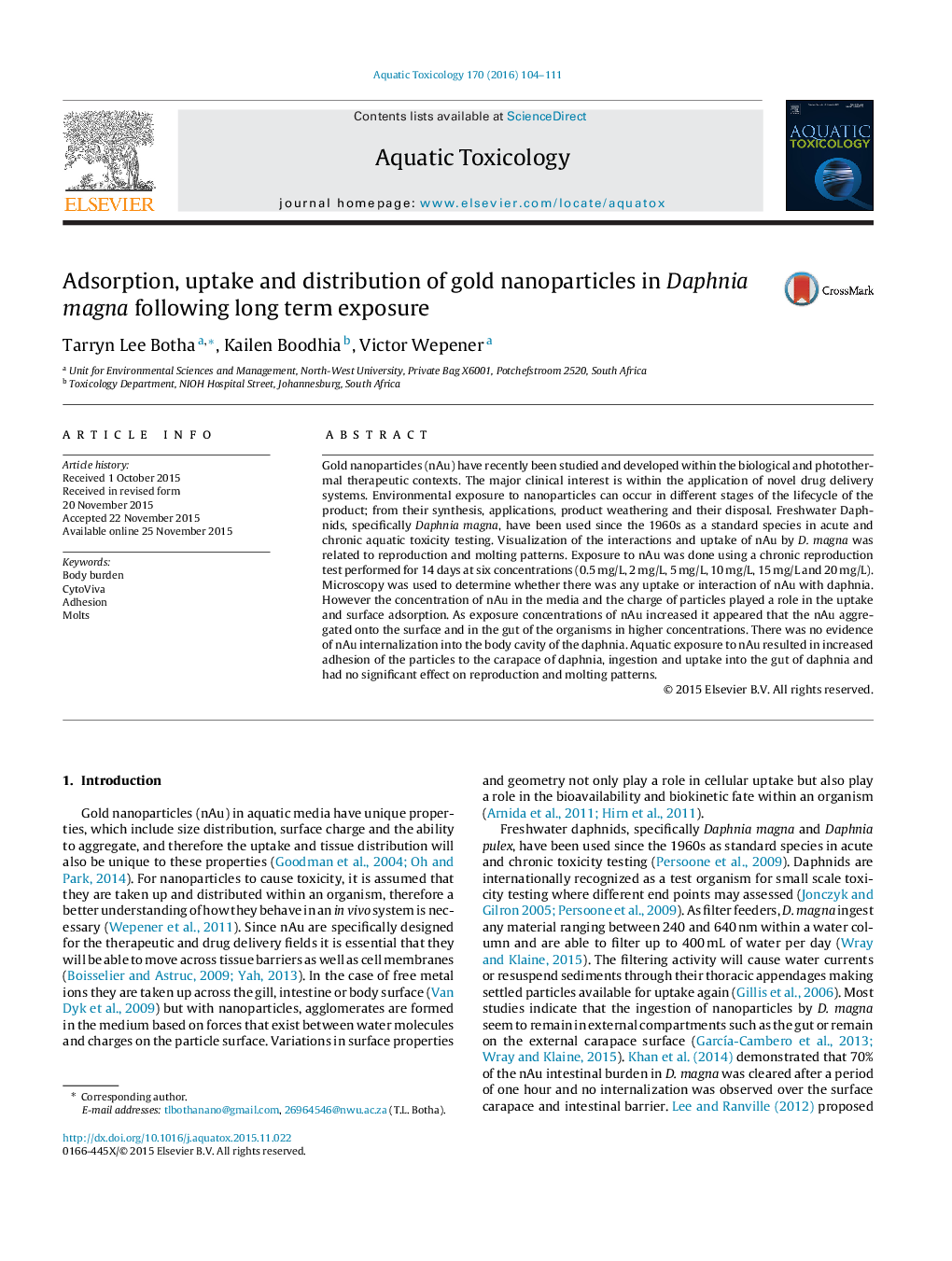| کد مقاله | کد نشریه | سال انتشار | مقاله انگلیسی | نسخه تمام متن |
|---|---|---|---|---|
| 4528971 | 1625935 | 2016 | 8 صفحه PDF | دانلود رایگان |

• CytoViva dark field imaging can be used to visualize nAu on the surface of D. magna.
• Higher intensities of nAu were seen on the carapace of D. magna as exposure concentrations increased.
• Particle diameter does not play a role in uptake since filter feeding by D. magna results in ingestion of nAu of different agglomeration patterns.
• There were no significant differences in the number of juveniles and molts released per day.
Gold nanoparticles (nAu) have recently been studied and developed within the biological and photothermal therapeutic contexts. The major clinical interest is within the application of novel drug delivery systems. Environmental exposure to nanoparticles can occur in different stages of the lifecycle of the product; from their synthesis, applications, product weathering and their disposal. Freshwater Daphnids, specifically Daphnia magna, have been used since the 1960s as a standard species in acute and chronic aquatic toxicity testing. Visualization of the interactions and uptake of nAu by D. magna was related to reproduction and molting patterns. Exposure to nAu was done using a chronic reproduction test performed for 14 days at six concentrations (0.5 mg/L, 2 mg/L, 5 mg/L, 10 mg/L, 15 mg/L and 20 mg/L). Microscopy was used to determine whether there was any uptake or interaction of nAu with daphnia. However the concentration of nAu in the media and the charge of particles played a role in the uptake and surface adsorption. As exposure concentrations of nAu increased it appeared that the nAu aggregated onto the surface and in the gut of the organisms in higher concentrations. There was no evidence of nAu internalization into the body cavity of the daphnia. Aquatic exposure to nAu resulted in increased adhesion of the particles to the carapace of daphnia, ingestion and uptake into the gut of daphnia and had no significant effect on reproduction and molting patterns.
Journal: Aquatic Toxicology - Volume 170, January 2016, Pages 104–111